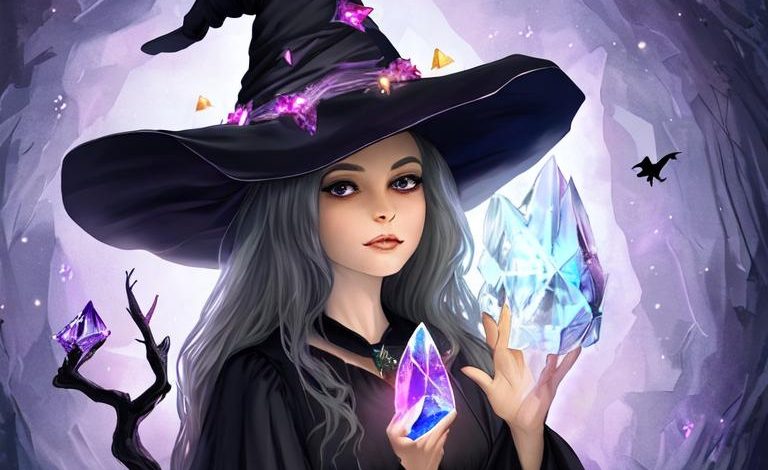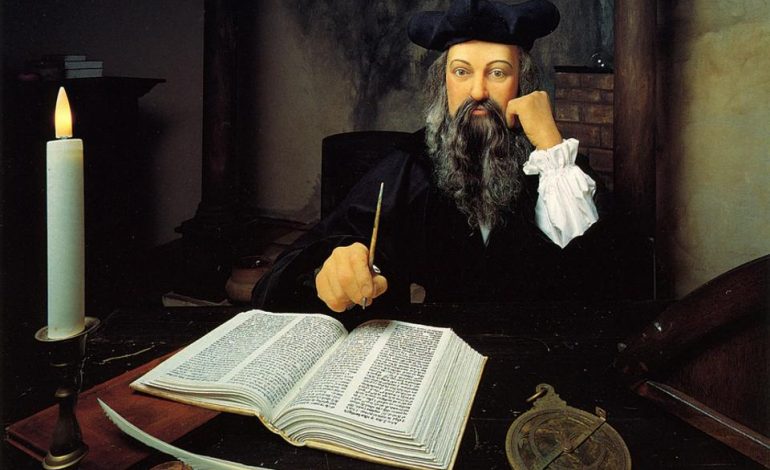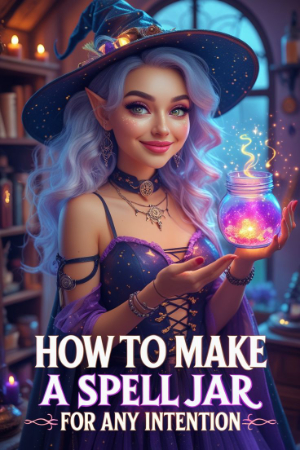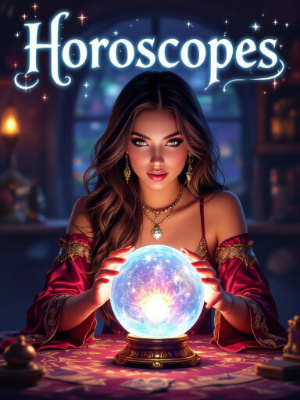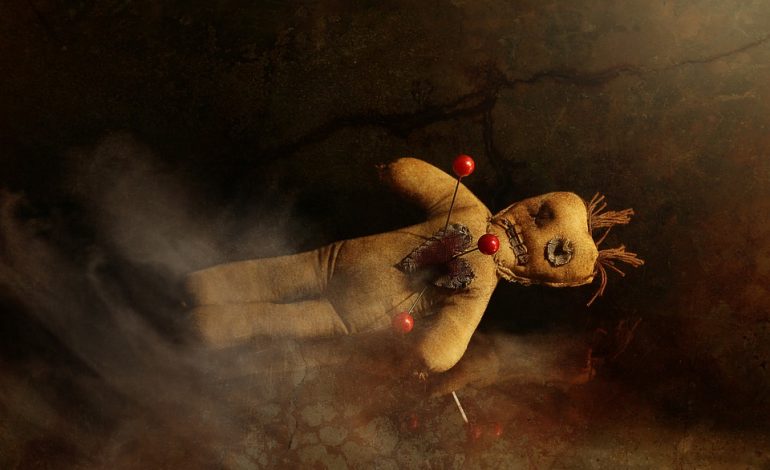
Voodoo Magick
The Word Voodoo (“heavenly intuition, vitality”), originated from the language of the African tribes, and actually has a positive connotation. Over the years the religion of Voodoo has been depicted as dark or negative magic. The essence of Voodoo magick is essentially an understanding that everything in the Universe is undeniably linked spiritually.
A Voodoo black magic practitioner is referred to as a “bokor,” a boker has heightened spiritual powers and is a learned student of toxicology. A bokor has the ability to use poisons to harm others, if inclined.
Black magic in some countries was considered a criminal offense until 1953, and there were bokors who did not honour the positive religious energy of Voodoo. Instead they chose to connect with, and channel demon energies which allowed them to practice their dark art. The price the bokor pays for his dark deeds, is to serve the demon in his world after his death.
Voodoo came to America in the 18th century, the government deemed it illegal to practice and made gatherings for Voodoo ceremonies almost impossible. Restrictions began to be lifted in the early 19th century.
In the old ceremonies the king and queen took their place while bonfires blazed around them and drums were beaten. A snake sacrifice then took place, the queen lifted a python from a box and 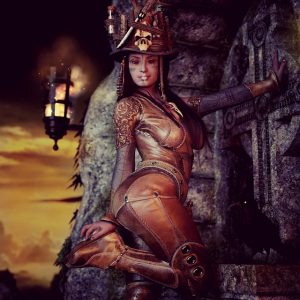 allowed it to lick her cheek, thus imbuing her with inner vision and power and the gift of the oracle. With a chain of handclapping the power was passed to the king and other chosen ones. The snake container was adorned with small bells and when the king shook it a hypnotic state was induced among those present. A male dancer represented the god, the Zombi. A cauldron boiling over a fire in the center of a clearing was given offerings during these ceremonies, chickens, cats, worms, birds and always a snake, would be thrown into the cauldron. The queen would then begin to chant;
allowed it to lick her cheek, thus imbuing her with inner vision and power and the gift of the oracle. With a chain of handclapping the power was passed to the king and other chosen ones. The snake container was adorned with small bells and when the king shook it a hypnotic state was induced among those present. A male dancer represented the god, the Zombi. A cauldron boiling over a fire in the center of a clearing was given offerings during these ceremonies, chickens, cats, worms, birds and always a snake, would be thrown into the cauldron. The queen would then begin to chant;
L’Appe’ vini le Grand Zombi (He is coming the Great Zombi)
L’Appe’ vini pou fe gris-gris (He is coming to make gris-gris)
A male dancer, clad only in a loin cloth, then leapt into the center of the clearing, carrying a coffin the size of a small baby. He was welcomed with cries of “Li Grand Zomi, Li Grand Zombi,” he then dropped the coffin at the feet of the queen and began a wild, whirling dance, spinning around and around. The dancer would collapse from exhaustion, others then began to dance, stopping intermittently to drink from the cauldron. Live pigeons and chickens were used in these rites, which were frenzied and frightening to witness as people fell to the ground possessed. It was as though the entire gathering of people were as one frenzied whole.
Any new members had to step inside a circle drawn on the ground with a piece of charcoal by the king. The initiate was then handed a wax effigy of a man, a piece of human bone and a horse’s hair. While striking the initiate about the head with a wooden paddle, the king would chant in African dialect, his words repeated by those present. As he was absorbing the power, the initiate began to spasm and jerk, if he became fearful and stepped outside the circle, the Voodoos turned their back on him. This was an evil omen. If the initiate stayed and gained enough power, the shaking changed into whirling dance movements, encompassing leaps into the air and elation as he accepted the consciousness of Zombi. He continued his wild dancing until he faints and falls to the ground. The king awakened him by hitting him with the wooden paddle, he is then given the oath of the Voodoos.
The origins of Voodoo are supernatural and geographical, and the word Voodoo originates from vo (introspection) and du (into the unknown). So you can think of Voodoo as an introspective journey into the unknown. With this perspective, the world of Voodoo seems more intriguing and fascinating, than fear inducing. There is a melding of the Voodoo gods, and the souls of the adepts and servants of the gods. The energy of the Sun and the Moon is invoked during all Voodoo ceremonies, with the belief that the natural energies of the Universe are the most potent of all. The Sun’s energy is the energy that supports the structure, peristyle of the oum’phor, the (Voodoo temple). The wooden center post is the integral part of all Voodoo temples, it is the “solar support.” In all Voodoo rituals and ceremonies the center post is referred to. The axis, the center post, is a representation of the Voodoo god Legba, while the wood of the post denotes Mercury, and Mercury is also Legba.
The center post is decorated with the serpent gods Danbahlah and Aida We’do, and all the colours of the rainbow, the colours are painted in a spiral band. The Voodoo goddess Erzulie, the symbol of the Moon, is kept near the center post. The lunar symbol, a model boat, is suspended from the ceiling, completing the planetary significance. The oum’phor is the temple of Voodoo, it has religious connotations and is said to resemble the design used by Moses to build the Ark.
The temple altar is called the pe’, it is a rectangular or square platform, the height of a man’s chest. Objects related to Voodoo are kept on top of the altar. Bells, ritual rattles, thunderstones imbued with supernatural powers, chaplets, ritual necklaces, magic arms, books on occultism, drums, copious jars and pots and flags. Within the jars and pots is contained the spirits of those who worship at the oum’phor. The govis jars are the jars the gods descend into when called upon for consultation.
The Peristyle is the roofed courtyard next to the oum’phor, it is partly enclosed and the place where mass ceremonies and Voodoo rituals are practiced. The Peristyle is also a place of healing and people can bring their sick relatives and friends to be healed by Voodoo magic. There is a low wall bordering the Peristyle and the floor is of beaten earth. Those not properly attired for the ceremonies, or are spectators, are permitted to stand behind the wall to view the proceedings. Members of the oum’phor sit on benches inside the Peristyle. There is always a picture of the president of the country placed on the wall of the Peristyle, during large ceremonies flags are also hung from the crossbeams of the temple. There is a perpetual fire burning in the oum’phor yard. An iron bar which is said to have fallen from the sky, is a cosmic symbol of sexual desire, this is planted in the center of the fire. There is deep significance attached to the bonfire which is called the, “forge of the Ogous.”
The Voodoo gods (loas) come from all parts of Africa. Voodoo rites derived from Africa, spread to Haiti, Cuba, Brazil and the United States. Voodoo is practiced in Florida, Charleston, Galveston and New Orleans. Voodoo began very quietly in America and the Voodoo priests were able to practice for a time without interference, but over time they began to attract attention and the authorities intervened. Extreme punishments were imposed upon those involved in Voodoo activities. Restrictions on the practice of Voodoo continued for centuries.
There are two forms of Voodoo, with one form of Voodoo small events are created to then become a reality in the material world. Hence the Voodoo doll, the idea of which strikes fear into the hearts of many. In the other form the gods are invoked so their energies may be aligned to magical practices. Deities are summoned as a part of powerful and elaborate ceremonies, within these ceremonies participants are whipped into a frenzy, with rituals combining movement and chanting. These rituals are usually conducted at night, by firelight.
Supernatural beings in the Voodoo realm, are known as Loa, the two groups are: Rada-Loa and Petro-Loa. The Rada-Loa serves creation, the enhancement of life, elevation of the collective unconscious. The Petro-Loa are demons, invoked for the sole purpose of negative and harmful magic. The initiator of this type of magic put their body and soul in jeopardy.
When invoking the Petro-Loa, a blood sacrifice is required, commonly used is a black chicken or a black goat. As the consent of the animal is required before the sacrifice, the animal is offered food, if the animal eats the food, it is considered to have given its consent to be sacrificed. If the animal refuses the food, it is replaced with another animal. The Petro-Loa are called upon as protectors from black magic.
There is an honoured hierarchy afforded to the entities called upon in these rituals, and although in some cultures these entities are considered negative, or even malevolent. Within the Voodoo belief system they are revered.
The most dangerous of all curses in magical practices is the Voodoo curse, those who practice Voodoo fear this magic above all others. Even Voodoo practitioners fear being “hoodooed.”
How To Make A Voodoo Doll:
Items Required:
Two very strong sticks
Scrap fabric cut in 2 inch strips, make them 2 – 3 feet long (any colour)
String
3 buttons (eyes, nose, mouth)
Needle and thread your choice of colour
Coloured ribbons
Feathers or knitting wool (to be used as hair on your doll)
Glue
Seven pins with coloured heads – Black, red, blue, green, yellow, white
Assembling Your Voodoo Doll:
Make a cross shape with your two sticks, tie together with string, bind tightly.
Wrap Your Doll:
Take your string and wrap is around the sticks, begin at the middle and go up around the head, down one arm, back across the other arm, back to the middle and down to the bottom. Wrap the doll in a continuous motion, going left to right, this will strengthen and reinforce your doll.
Add Fabric To Your Doll:
Wrap your fabric around the entire doll and glue in place. You may need to stitch the fabric together, this is optional.
Voodoo Doll Face:
Attach two buttons for eyes, and one button for the mouth. Use feathers, or strands of knitting wool for your dolls hair, attach to the top of the head. Be as creative as you wish.
The magical adepts who use Voodoo dolls can create ancients spells, they can bring good luck, misfortune, curse someone they dislike, or someone they feel has wronged them. They can make someone fall in love, make someone fall out of love, and in the most extreme, cause pain, illness and death. There is more involved to Voodoo doll magic than sticking pins willy nilly into a doll, there is a process involved. Coloured pins are use and different emotions and feelings are attached to the specific colour of the pin. There are seven pins used when performing Voodoo doll magic.
Seven Voodoo Pins And Their Energies:
Red – Power
Black – Repelling negative Energy
White – Positive
Blue – Love
Green – Money
Yellow – Success
Purple – Spirituality
(a) Once you have familiarised yourself with the energies associated with each coloured pin, you then concentrate on each pin individually.
(b) Meditate while holding the pin you will be using and visualise the energy exuding from the pin working to manifest what you desire.
(c) When you are absolutely clear about your intention, stick the pin firmly into the heart, or the stomach of your doll. This is symbolic of your heart’s desire and your gut instinct (intuition). To absorb and channel knowledge, stick the pin into the head of the doll.
(d) You may use each pin in this way.
(e) Be patient and give the Universe time to manifest that which you desire.
For those genuinely interest in Voodoo magic, there are exercises that enhance magical abilities. To those sorcerers wishing to create mayhem with their magic, the tenfold law applies in Voodoo, just as the threefold law does in Witchcraft. Whatever you send out to the Universe, be it good, or bad, will come back to you tenfold when working within the law of Voodoo.
Wise practitioners of magic, understand and honour the Universal magic law, and practice within the guidelines set down. Voodoo must be practiced with caution. Most Voodoo knowledge and tradition is passed down orally and shared from generation to generation.
Voodoo Ritual Legba:
One of the many Voodoo rituals that is favoured, calls upon Legba, (Elegba – Eshu – Ellegua). Legba is referred to as, “God of the crossroads, singer, warrior, jester, guardian of the door to the world of spirits. He usually presents himself as a crippled old man, or as a vulnerable child. As Legba is a shape shifter he is often likened to the trickster god and shape shifter, the meddlesome Loki. Like Loki he can be mischievous and playful, or malevolent and dangerous. He has also done the unthinkable and revealed stolen Divine Secrets to human beings, who under no circumstances are to have been given this potent information.
As the youngest son of Lisa the Sun god, bringer of heat, strength and energy, and Mawu the Moon goddess, provider of night cool, fertility, rain and peace, Legba encompasses these attributes as god of fate. He has the choice to bestow cataclysmic disaster and overwhelming sorrow, or luck, benign energy, prosperity, abundance and good fortune.
Ceremonies begin with the summoning of Legba, thus opening the doorway to other gods, as he is the guardian at the door of the world of spirits. His task is to translate the supernatural into the language of humans. The ritual takes place next to the holy center of the Voodoo temple, this being a column decorated with consecrated signs. This center becomes the channel through which the spirits communicate. Legba is the guardian of the bridge connecting the place of the dead with the world of the living. With the consent of Legba, ancestors can return from the dead, to seek revenge if they feel they have been ill treated, or to protect their families.
Before a ceremony can begin, Legba’s ve’ve’ is drawn on the ground. The invocation is as follows:
Atibon Legba open the gate for me
Papa Legba open the gate for me
Open the gate that I can enter
God Legba open the gate for me
When I return I will thank the Loa
Abobo.
As part of the ceremony the Voodoo priest approaches the door several times, as a symbolic gesture, this is done until the moment Legba takes possession of one of the people attending the ceremony. The one possessed by Legba takes on the appearance of an old, crippled man, they then begin limping. For a time it is as though the person possessed is actually crippled. This is a showcase of Legba’s power over others, despite his seeming fragility. Once Legba has presented himself in this manner, the other gods may be summoned.
The altar prepared and placed on the ground for Legba’s manifestation, is in a box on the ground, or a small room, or closet near the entrance of the home. The appropriate greeting for Legba is, “Ago Ellegua.” Legba is called upon when the seeker needs advice and guidance. The god will then lead the seeker to the correct path and open the way for him. Legba has the power to influence people’s lives, and alter their life situation, he can create dramatic, life altering and beneficial changes. The recipient of Legba’s benign magic will have no doubt the god has bestowed his gifts upon them.
Coconut Child Ritual:
A powerful witch who is the leader of a witch circle conducts this magic for her pupil, the witch and her apprentice must have a strong bond and of course the witch must be the more powerful of the two. The pupil then goes to her favourite marketplace and chooses a coconut, there has to be something about the shape or look of the coconut that reminds the apprentice of her teacher. The coconut is the coconut child, the apprentice places the coconut behind the door of her house for three days. After three days have gone by the apprentice witch asks Legba for his blessings.
The apprentice witch gives the coconut to her spiritual guide, it is washed in spring water then sprinkled with earth from a sacred place, it is then covered in incense. The spiritual guide then holds the coconut over a white candle until the incense and the small hairs on the coconut have burned away. She then imbues the coconut child with good wishes and the requests of the apprentice witch. On three successive days the requests and wishes are repeated in front of a white candle and a glass of water. The coconut child is then placed on the altar undisturbed for three days, after which it is painted.
After these rituals are completed, the sorceress ties three tiny bells to the long hairs at the end of the coconut. The teacher witch then places the coconut behind the door of her home for three days, after this time she thanks Legba for protecting her apprentice. The coconut child is handed back to the apprentice, who may then hang it on the door to her home, or place it behind the door. The witch is thanked with money or a gift given to her by the apprentice.
Voodoo Ritual Shango
Shango, (Xango, Chango), god of the fire. Shango is a warrior, judge, ruler over thunder and lightning, fearless, courageous, quick tempered, physically appealing. Shango was born as an Earth god, he lived among humans, there he reigned in the kingdom of Oyo for his entire earthly existence. The Yoruba tribe, in what is now known as Nigeria, revered Shango. He is the most powerful of the seven major Loa, yet he is not invoked often.
During Shango’s time on the earth plane he prepared for his divine life, magic powers were bestowed upon him. Like a dragon, flames came out of his mouth. Like the god Zeus, he hurled lightning bolts at his enemies, his priests also possessed this ability. Many died as a result of his power and his subjects were not happy, they voiced their disapproval and he ascended to heaven on a golden chain. Shango is worshipped as the god of justice, the depiction is him with his three wives named, Oba, Oya and Oshun. People kept the embodied power of Shango in their home on the altar of a house, by a ram’s antlers, or a double bladed knife. The two sides of life are depicted by the double bladed knife.
The power of Shango is used in court proceedings and during ceremonies he is invulnerable to fire, illnesses can be cured by Shango’s fire element.
Justice magic Ritual:
To begin this ritual, six chilled red apples are required, a bowl must be purified by the sorceress with cotton balls. The witch rubs her entire body with them, at the same time she reveals all the injustices she has suffered. The apples are placed in a bowl along with six whole, hot, red, chillis, honey is then poured over them until the fruit is entirely covered. The bowl is taken to the forest and put under a tree, this is an offering to Shango who then finds a solution to the problem.
Voodoo Ritual Oshun:
Goddess Oshun (Oxum, Ezili, Erzulie), goddess of love and creative powers, mistress of abundance and passion beautiful, seductive, young. Oshun is likened to Aphrodite and Venus. Aligned with beauty, love, fertility, sensuality, passion. Celebrated as goddess of the river Oshun. Every year there is an elaborate celebration in her honour. During the celebratory dancing rituals Oshun selects particular women as intermediaries, those chosen are connected to the goddess for their entire lives. Others consult the women selected by Oshun, seeking their wise counsel in matters to do with children, fertility, love and life in general.
Oshun is worshipped as Erzulie, the divine concubine in Haiti. She is known for her short term love affairs. The goddess Oshun was married to the fire god Shango, the marriage did not last long. It is Erzulie’s task to help others embrace passion, sensuality, and a love of life. Erzulie uses her powers to heal the sick over the waters within her realm, she provides nourishment for the hungry, and shares with all the abundance the world has to offer.
As the head of witches, Erzulie has ultimate power over male gods, manipulating them to attain her own desires. Caution is required when Erzulie paints herself with her enemies blood. She also has the power over Hawks.
All temples in Haiti have an altar dedicated to Erzulie. After the ceremony invoking Loa, Erzulie manifests as a beautiful, young mulatto wearing a feminine yellow, or rose coloured gown, her hair cascading down her back. Once Erzulie has taken possession of a person, usually female, the person is led to the altar and uses the toiletries that are available for her to groom herself with. On the altar there is a bowl of water, towel, comb, toothbrush, nail file, lipstick and various other makeup items. For her own entertainment Erzulie sometimes chooses to possess a man, once possessed the individual begins to behave like a flirtatious woman and attempts to tantalise the males who are present at the ceremony. The goddess loves to receive gifts which she generously donates to others. She can be dismissive of women, with the gesture of extending her little finger in a somewhat, demeaning gesture.
Erzulie is the patroness of Voodoo followers and ladies of the night. On her ve’ve’, pierced by a lance, is a portrayal of the broken hearts of men. Erzulie is the epitome of flirtation, free love, and an abundant, decadent and opulent lifestyle. Reflecting racial bias in Haiti, the goddess who is a dark skinned mulatto, will not submit to the black skinned dead person’s Loa, the ever pining, thwarted, Gue’de’ Nibo.
Voodoo Prosperity Ritual for, Beauty, Health and Love:
For this ritual you will require a string of pearls with small bells attached, and a feathered fan dabbed with expensive perfume. Into a bowl containing honey, place five vanilla sticks, cloves, pumpkin pits, cinnamon sticks and five dashes of nutmeg. Place the bowl on your altar, and while standing in front of the altar, with outstretched arms, beg Oshun very clearly and articulately, to fulfill all your wishes. Finally request that the goddess send riches and good fortune to the world, offering them love, health, abundance and sustenance.
Voodoo Ritual Oya:
Oya, (Yansa, Aida-Weda, Olla), goddess of wind, fire, water, rainbow. Ruler over forces of nature, warrior, courageous, beautiful, sensual, unpredictable, charismatic and practical. Oya is the goddess of unexpected and sudden changes, she can be destructive, using her powers to create tornadoes, earthquakes and thunderous rain. From moment to moment this goddess can alter her behaviour, bringing sunshine and rainbows, or weather so extreme it can destroy entire regions. Her wild dancing is the energy that creates the perpetual movement of the world, her aim is to create change by breaking apart that which is old and unnecessary. Oya’s influence can enhance intuition and abilities, or instill limited mental capacity. The West-African river Niger is said to be an outward manifestation of the goddess Oya. Oya is a shape shifter and can at will transform herself.
During Voodoo ceremonies in which Oya appears through possession of an individual, causing the person to dance as if in a frenzy, while holding a torch in their right hand and moving as though setting trees or building a light.
Voodoo Change Ritual:
Place upon the altar of Oya all things pertaining to the goddess. When you are ready for significant life changes you may begin the ritual. One ripe eggplant washed with red wine is required, and one wide, dark orange ribbon, which then has nine different coloured ribbons attached to it. Tie the ribbon around the eggplant and keep turning it anti clockwise, while you state very clearly the life altering changes that you want Oya to bring about for you. To add more impact to the ceremony, place a silver bolt, cut out of cardboard paper, on the altar. A witches broom festooned with ribbons in Oya’s colours will symbolically sweep away past and clear the way for the new.
After placing the eggplant on your altar, take is out into the garden or the forest when it withers, allowing it to become part of the earth.
Voodoo Ritual Yemaya:
Yemaya, (Imanje, La balianne), is the female goddess of the oceans, fertility, mothering, nourishing, desirable, charming, loving, kindness. Ruler of the oceans and the embodiment of female power, guardian of all nourishing entities and women’s affairs. Yemaya is a large black goddess with the look of a mermaid and powers of seduction. The Yoruban people of Nigeria worship her as the mother of the river Ogun. A container filled with water from the Ogun is used as a cure for infertility. Poultry and fish are offered as a sacrifice to the goddess, yams and cowrie shells are given as gifts.
Festivals during the full Moon are held in Ymaya’s honour, she is seen as crystal clear and shining, dark and mysterious, all at the same time. The goddess has the power to consume and nurture, she is dedicated to renewal. Go to your altar and call upon Yemaya if you need her help, be very clear as you state what you want her to help you with. After voicing your request remember to thank Yemaya for her kindness.
Much of what has been written about Voodoo, has been based on fearful assumption and little knowledge. Voodoo is actually an ancient religion involving rituals, symbols, ceremonies and has as much historic relevance as any other religion. Voodoo has a rich, elaborate and fascinating history, with individuals and families embracing it and passing it down through the generations.

